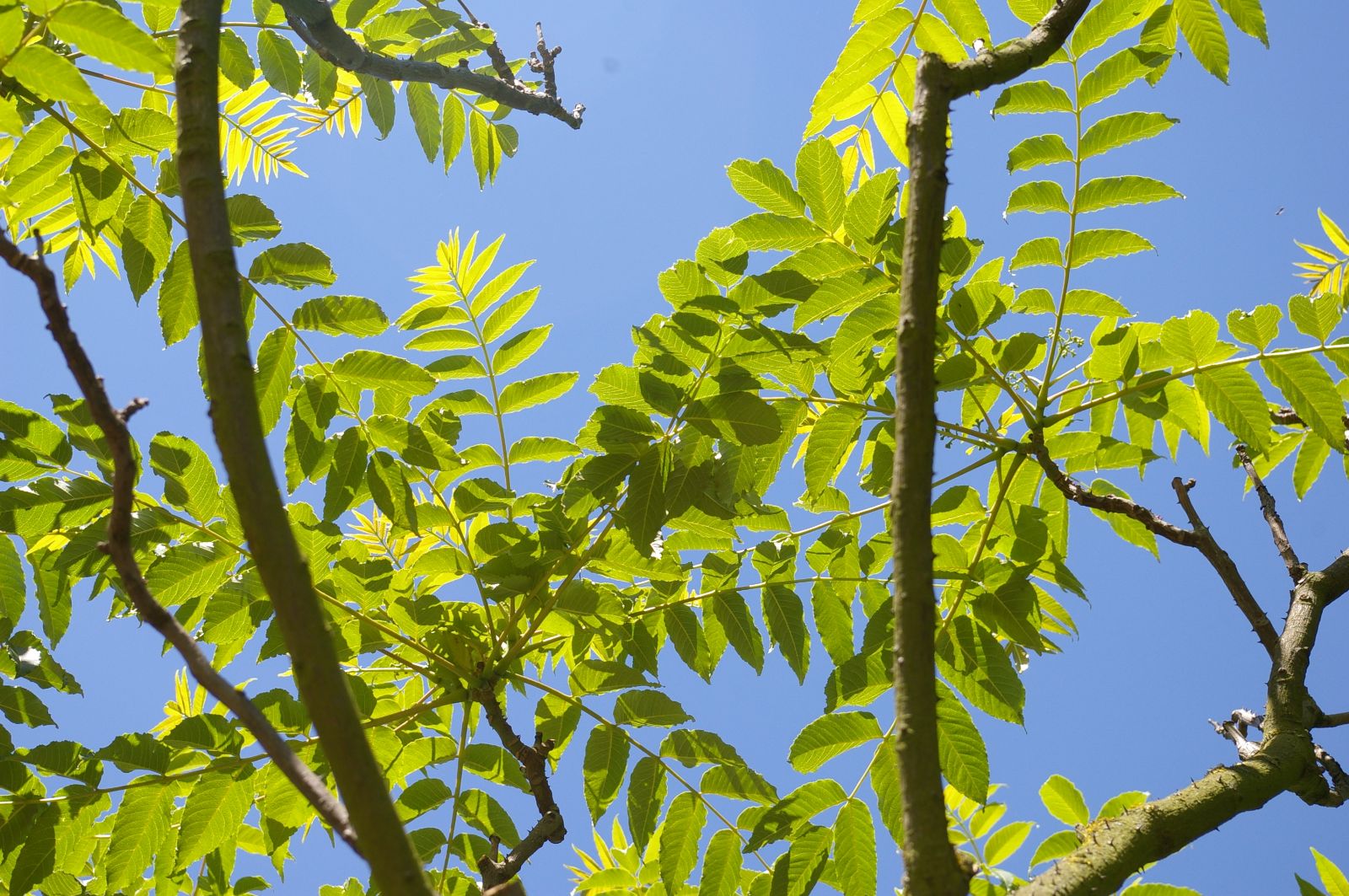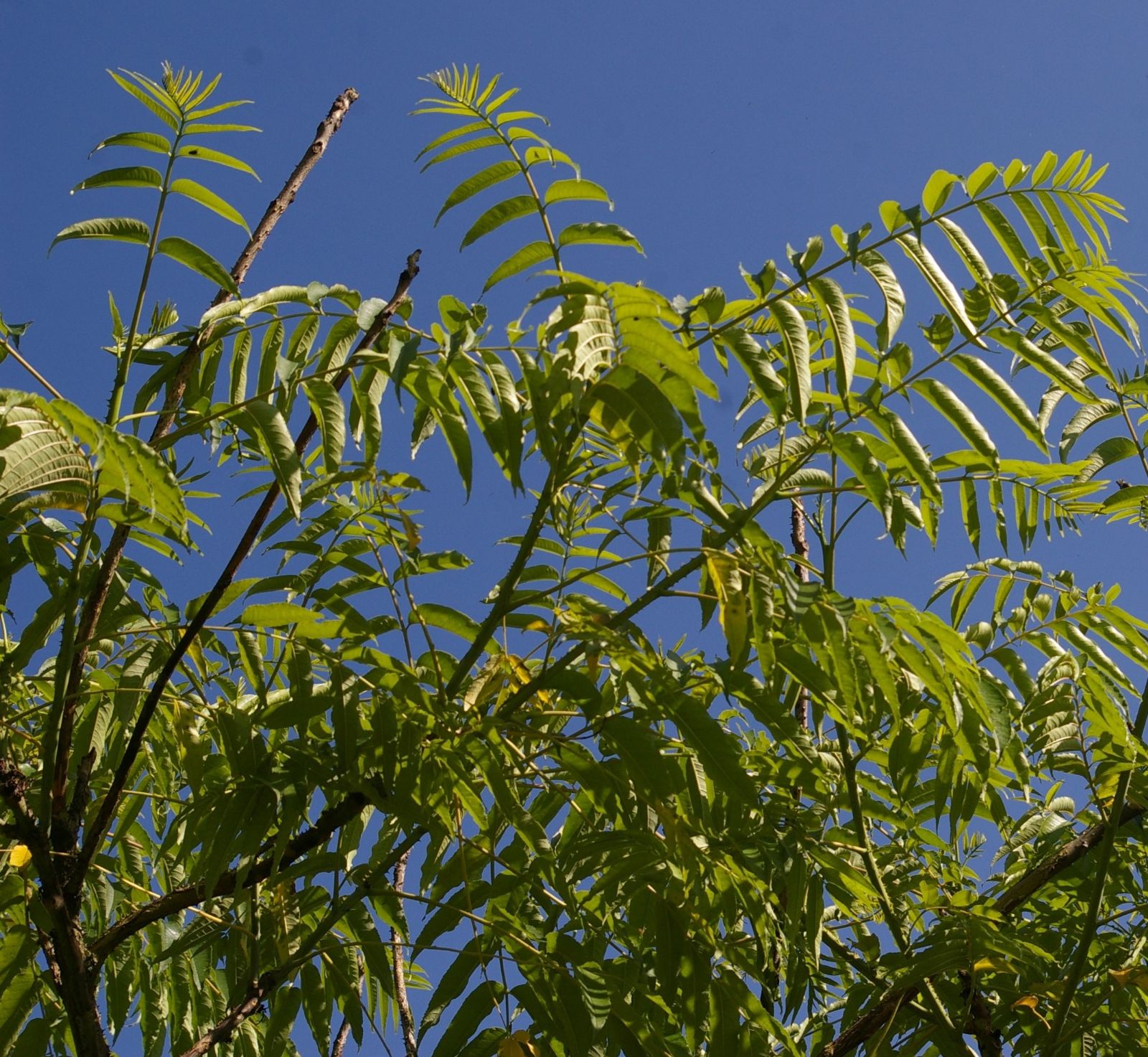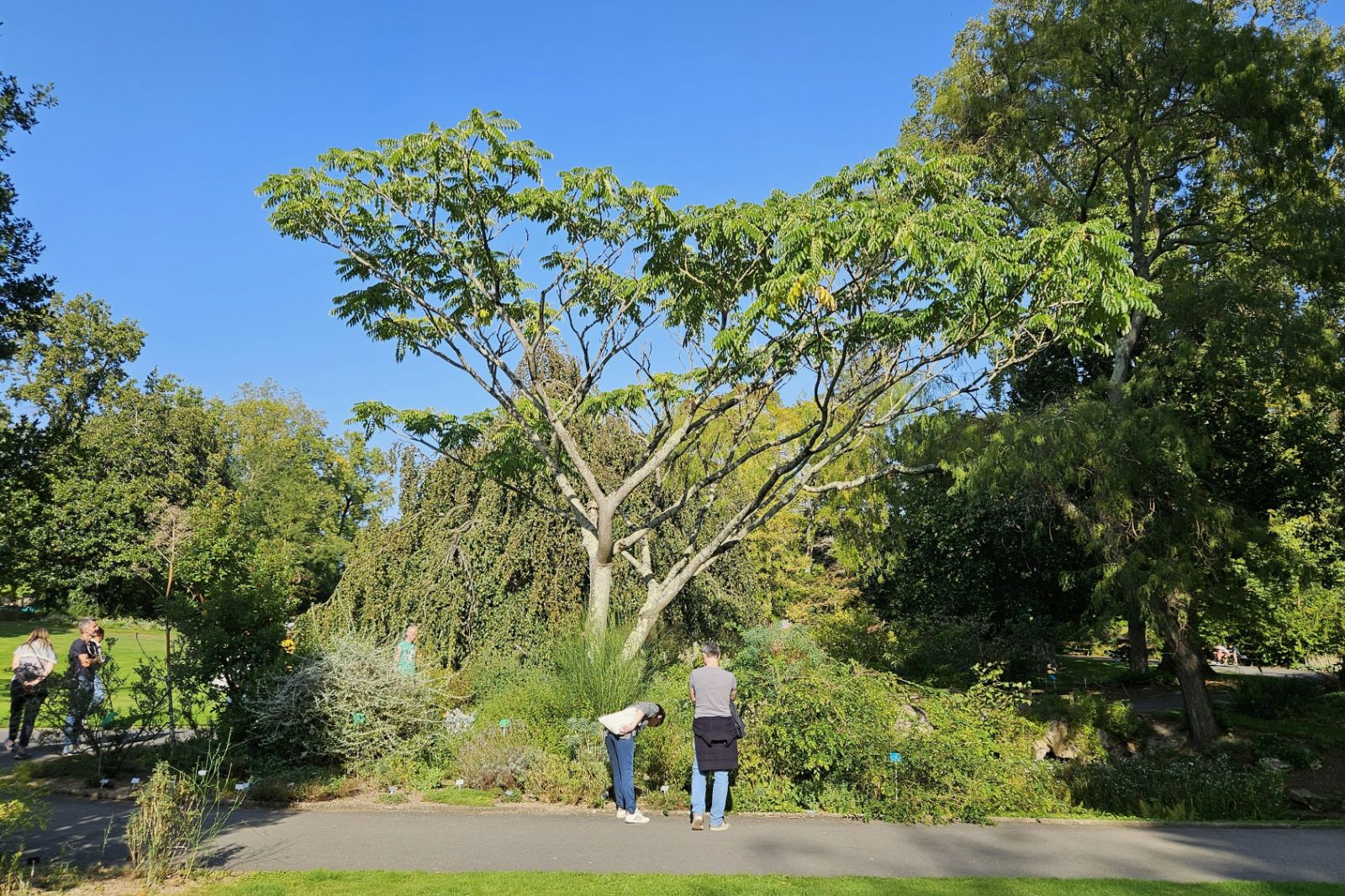Zanthoxylum ailanthoides
Sponsor
Kindly sponsored by
Fonden for Træer og Miljø, The Danish Foundation for Trees and Environment
Credits
Article from Bean's Trees and Shrubs Hardy in the British Isles
Recommended citation
'Zanthoxylum ailanthoides' from the website Trees and Shrubs Online (treesandshrubsonline.
Genus
Synonyms
- Fagara ailanthoides (Sieb. & Zucc.) Engl.
A deciduous, dioecious tree 50 to 60 ft high in Japan, the branchlets very stout, glabrous, densely set with short, stiff spines. Leaves pinnate, variable in size, normally to about 18 in. long on adult trees, but up to 3 ft long in the juvenile state; lateral leaflets in five to eleven pairs, 2 to 5 in. long, ovate or ovate-lanceolate, finely toothed, smooth, dark green. Flowers in terminal cymes up to 5 in. across; sepals and petals minute, the latter greenish yellow. Stamens yellowish. Seeds black, compressed and tapering at one end.
A species of wide distribution in E. Asia, from Formosa through Japan to S. Korea, and eastern China. Often introduced, it is tender, but very handsome and vigorous when young.



